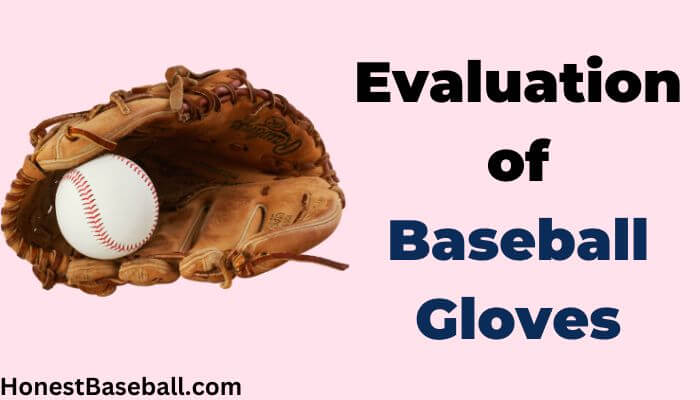Many sports have evolved over the years, bringing new technological advancements that allow athletes to compete at a higher level. That is true for baseball as well. From their inception, baseball gloves were designed using leather and other natural materials such as beads or cork.
These early gloves allowed players to grip the ball better and made it easier for the catcher to catch the ball with one hand while throwing it with the other!
Baseball gloves have changed so much over the years. If you were to time-travel back to just 10 years ago, you might be surprised at how different of a game it would be. And that might be because of the technological advancement that has happened since then.
In this article, learn about the evolution of baseball gloves from when they began to now and how they’ve changed from an essential item with only one layer (leather) to a much more complex product with many layers of protection and materials.
The First Attempt of wearing a Baseball Glove
The use of the baseball glove dates back to 1875, when Charlie Waitt, an outfielder for the St. Louis Cardinals, contributed to the sport. While this was a giant leap from playing without protective gear, Waitt’s gloves weren’t completely up-to-par.

His two pairs of fingerless tan leather gloves were hardly the protective padding players have embraced today. Nonetheless, although Waitt himself wasn’t too comfortable with them and would eventually switch back to not wearing any gloves at all, others adopted the new glove trend and began consistently wearing them over time.
This gradual adoption laid the foundation for the baseball glove industry that athletes enjoy today, providing a more comprehensive range of material, design, and padding options and significantly improving their performance on the diamond.
It wasn’t until the 1920s that baseball truly made the most of its equipment, with the introduction of the webbed glove design between the thumb and pointer finger. This was a revolutionary moment for baseball gloves, marking a shift from protection for our hands to an aid for performance.
Bill Doak first suggested this design, and players soon flocked to capitalize on its improved capabilities – catching balls quickly became more effortless. It had a lasting influence on the sport itself. Indeed, it can certainly be said that before this significant moment in 1920, baseball gloves were little more than just coverings for players’ hands.
Since then, baseball gloves have evolved significantly. Today’s gloves are made from various materials, including leather, cotton, and synthetic materials. They come in different sizes and shapes to fit different hand sizes. Some gloves also feature extra padding on the fingers and palms to provide more protection against injuries.
Modern Baseball Gloves
The modern baseball glove has come a long way since its original conception as a single leather piece used to catch baseballs. Nowadays, the gloves worn by professional and recreational athletes are works of art – constructed with strong yet flexible materials in intricate designs that facilitate various catching styles and provide lightweight comfort and durability throughout the entire season.
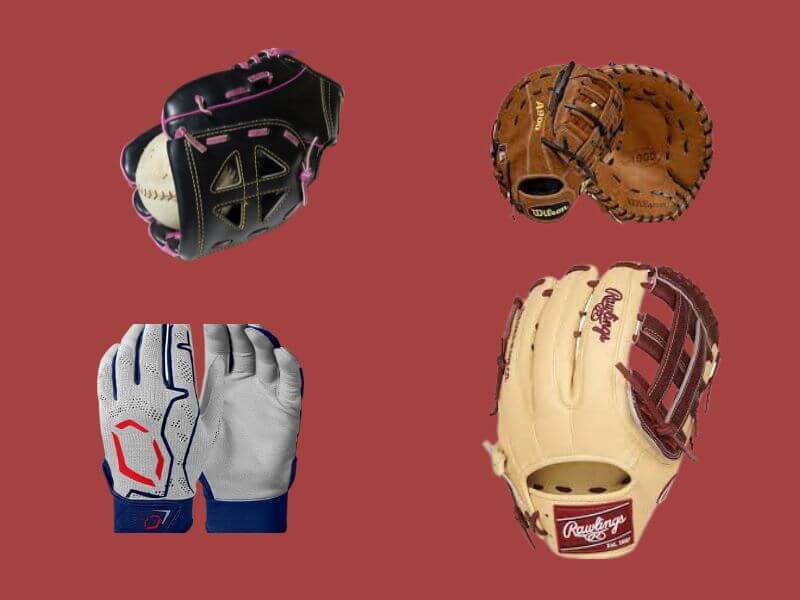
Different pocket shapes and sizes help batters hold onto the ball more securely. At the same time, finger designs provide increased flexibility that allows players to adjust their grip on the ball when needed.
And with new fabrics like kangaroo leather providing enhanced breathability and moisture-wicking properties, the modern baseball glove has become an essential piece of equipment for those seeking to reach their athletic goals.
One type of glove is the batting glove, designed to help hitters stay connected with the ball and make contact more easily. It typically has large padding around the hand and fingers to provide extra protection.
Another type of glove is the fielding glove, which defenders use to pick up balls and throw them to first base or third base. Fielding gloves typically have smaller padding, making them less likely to cause injury if caught between two players.
There are also pitchers’ gloves, which pitchers use to hold onto the ball while they deliver it to their catcher. Pitchers’ gloves usually have thicker padding to absorb more impact when they hit the ground after throwing a pitch.
Players also use specialty gloves for specific situations. For example, catchers often use mitts that have Velcro straps so that they can adjust them to fit their own hand size better.
Infielders may use warm-up Gloves before games to protect their hands from cold weather conditions. And finally, outfielders may wear a batting helmet when playing in daylight hours to protect their eyes from flying balls.
The variety of gloves available on today's market makes it easier for players. Here you can see best baseball gloves brands in the market right now.
Evolution of Baseball Gloves – Different types of gloves according to positions
Infielder glove
Players take great pride in their gloves, and the shortstop’s infielder glove is no exception. The infielder glove is designed to protect the player’s hand while fielding balls in the dirt, and it features a softer palm that helps reduce blisters.
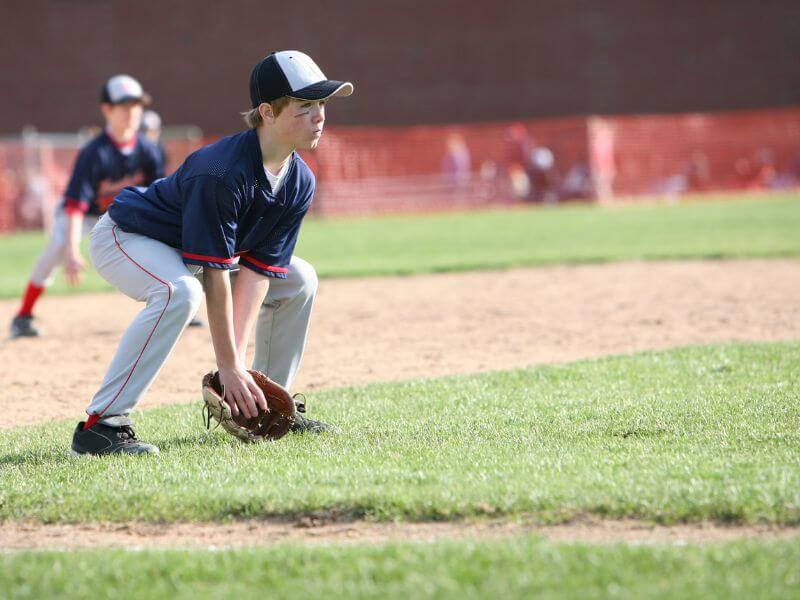
An adequately fitted glove is essential for a successful baseball season, and an infielder glove is no exception. The unique shape of an infielder glove allows for a comfortable fit, whether on the palm or near the wrist. Additionally, most gloves’ leather construction is durable to ensure that it lasts through multiple games and seasons.
Whether you’re a veteran player or just starting out as a young athlete, investing in quality infielder gloves can be exceedingly beneficial.
They have superior comfort levels and are preferable because they offer increased control over the ball due to their design: helping players better control even those hardest throws to second base. The pocket of an infielder’s glove also allows for extra cushioning to help reduce any potential impact when catching the ball.
The infielder glove is typically made of cowhide leather, which is tough but provides a good grip. Some players prefer stiffer leather for durability, while others choose a softer option for better control.
A good fit is essential for this type of glove, as improper sizing can lead to hand injuries. Players should measure their hand at its widest point and compare that number to the width listed on the glove size chart.
Infielders use their infielder gloves for various purposes, from catching fly balls in the air to scooping up ground balls on the ground. Because of its softness, the infielder glove is handy when making contact with balls in the dirt. This allows players to stay on their feet longer, preventing them from getting hit by pitches or bouncing off the ground too often.
Want to buy the best infielders gloves? I have listed the best 10 infielder gloves.
Additional resource: best baseball glove by position.
Batter’s Glove
Batter gloves are often a part of baseball, and for a good reason. Not only do they protect the hands from injury, but they also help batters keep their grip on the bat.
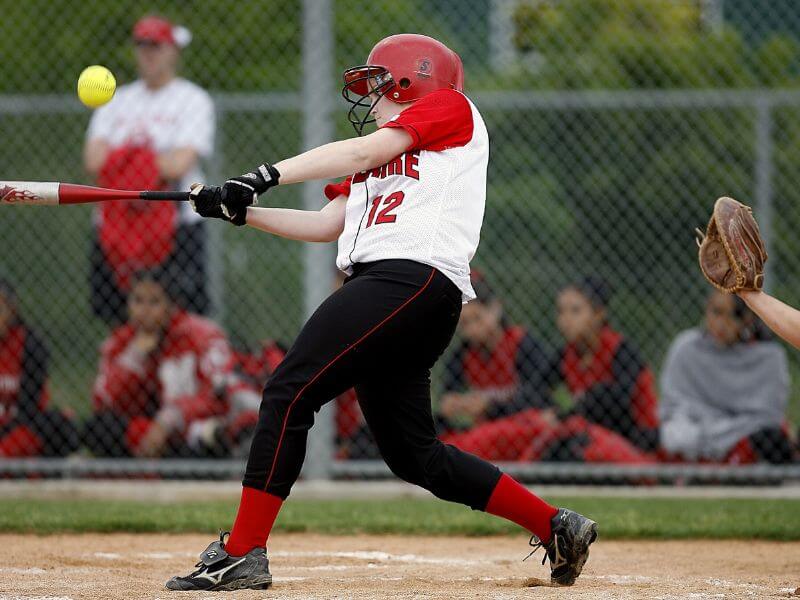
Traditional batting gloves are made of leather or Kevlar and come in both lefts- and right-handed versions. They offer good protection against hard contact but can be bulky and restrictive regarding mobility.
More recently, however, there have been developments in batting gloves that allow for more freedom of movement. These gloves are typically made of synthetic materials such as Spandex or Lycra and feature stretchy panels at the back of the hand to provide greater flexibility.
They can be worn by either hand and offer better protection against dirt and moisture than traditional batting gloves, but they tend to lack durability when it comes to hard contact.
When choosing a batting glove, you must consider what type of player you are. For example, if you are a power hitter who hits balls with a lot of force, you will want to invest in a heavier batting glove that offers more protection.
On the other hand, if you are primarily a singles hitter who relies on accuracy rather than power, a lighter glove may be ideal. Additionally, depending on your position in the field, you may need to purchase different batting gloves for left-handed and right-handed.
If you are looking for a batting glove, I have a complete review collection here: 10 best batting gloves.
The First Base Glove
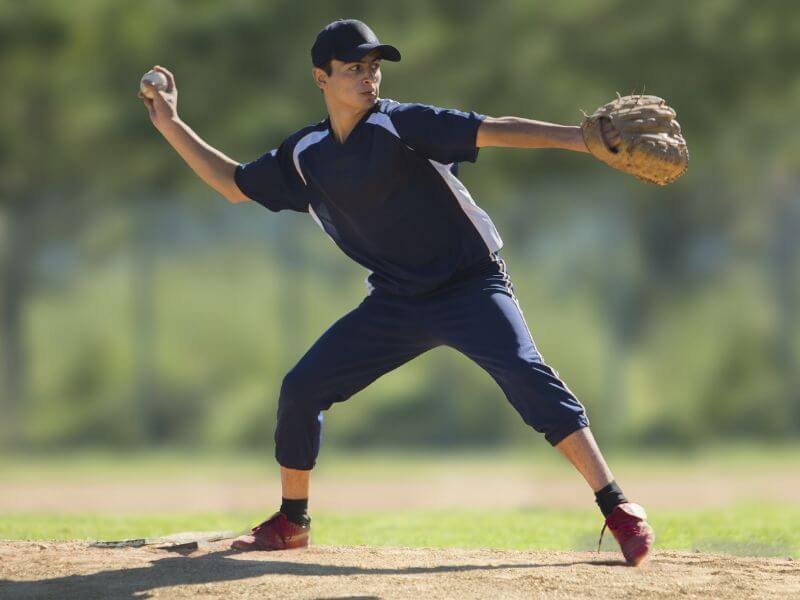
Don’t get confused. You might be thinking. I just read about the infield glove. What is different about the first base? Well, the first base glove is slightly different from the other infield gloves.
The first base glove is larger than the other gloves used in the infield—which makes sense when you think about it. It gives teams throwing to the first baseman more of a target, which means there’s less chance of an error resulting from a bad throw.
That’s useful because throwing an Allen wrench across the field isn’t exactly easy! Having such a large target also encourages teammates to throw accurately and harder, making the game faster and more enjoyable. A baseball team’s performance can improve significantly with reliable first-base gloves.
Outfielder Glove
Outfielder gloves are a kind of baseball glove with a special history that dates back hundreds of years. These gloves feature extra-long finger stalls, deep pockets, and open webs to make it easier for players to catch balls and throw them quickly.

Outfielders in the early days of baseball used them not only because the design was perfect for their job – long-distance throws require gloves with room for extra padding for comfort and an open web that can secure the ball quickly – but also because their thick material made them a viable alternative to an Allen wrench.
They still have the same classic look today – a light brown color with colorful stitching along the sides – but now, thanks to advanced technology, these gloves also offer excellent protection from shock absorption as well as outstanding grip no matter what weather conditions you play in.
Outfield gloves are used in baseball to catch fly balls, and balls hit off of the ground. Outfield gloves usually have a padded palm, a fitted cuff, and a short back. They are also designed to protect the hand from injury. In the early days of baseball, outfield gloves were made out of rawhide or animal hide. As ball technology improved, so did the design of outfield gloves. Today, most outfield gloves are made of synthetic materials such as leather or neoprene.
Outfield gloves are essential in protecting players’ hands and fingers from injury. They help players to catch fly balls and keep track of the ball in flight. Outfield gloves are also helpful for catching balls hit off the ground.
Whether playing in the hot summer sun or cold winter gusts, an outfielder glove is made for any season and situation, making it essential equipment for severe ballplayers everywhere.
Additional read: best gloves under USD 100.
Catcher’s Mitt
Catcher’s mitts are one of the unique pieces of baseball equipment out there, and they are often considered an indispensable part of a catcher’s arsenal! The Mitt also has two finger holes for gripping the ball.
The fingers are spread apart so the catcher can grip the ball as tightly as possible without damaging it. This ensures the ball will not move during contact with the hand or arm.
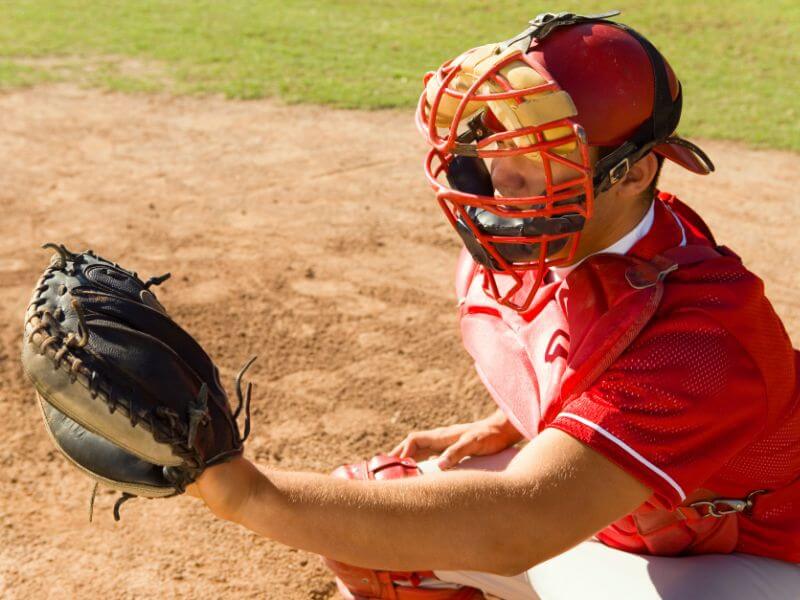
Catcher’s mitts are larger than standard gloves, with soft padding on the back and extra padding along the fingers. Not only do they protect a catcher’s hands when receiving fast-paced pitches, but they also provide additional grip to enhance ball-catching accuracy.
The construction of the catcher’s mitt is also uniquely designed with an open pocket allowing for quick ball reception in a split-second.
In essence, it’s like having an Allen wrench within easy reach when you need to fix something fast! What was once considered a novel idea has since become the norm in today’s game, making catcher’s mitts an essential piece of team gear for any baseball player.
If you are looking for a cather mitt, here is a guide for you 5 Best Catchers Mitt After Use Review By a Real Coach
How to choose a Baseball Glove
Choosing the right glove for a baseball game can be challenging due to the availability of different types and sizes. One of the most important aspects to consider when making this decision is fit.
It would be best to find a comfortable glove that fits your hand so you don’t fumble when catching the ball. Make sure your fingers aren’t cramped in the base or thumb panels, and the wrist opening isn’t too tight or loose.
Another central decision point is material: synthetic leather provides more ease of use, but if you want a classic style and feel, natural leather may be more your speed. There are also some intermediate levels of materials, such as pigskin, with improved tensile strength. Whatever you choose, make sure it allows maximum flexibility and comfort when playing on the field!
I have shared which size you should choose earlier in this article. Here is an article on What size of glove is the best fit for a 7-year-old kid.
Here are some more tips:
Here are some tips on how to choose the best glove for your needs:
1) Try on several different gloves before making a purchase. Finding one that fits your hand well and feels comfortable is essential. Some brands offer free returns if you do not like the glove’s fit after trying it on.
2) Consider what type of ball you will be using. Check which type of ball is being used before making a purchase. Some gloves are better suited for batting practice than gameplay.
3) The grip on a glove is essential. Make sure to get a glove with a good grip so you don’t lose control of the ball in flight.
4) Durability is another factor to consider when choosing the best baseball glove. Ensure the material is strong enough to handle repeated use without tearing or breaking.
If you are finding gloves for your dad, here are my recommendations.
Final Words
I have been writing about different baseball gloves and helping you to find the best glove from my experience for some time now. But recently, I thought it would be better to write a blog on the evaluation of baseball gloves and what glove you should pick. I hope this article was helpful to you. You can read my other review blogs and buy one or find other help.
More blogs on Gloves
Wilson A2000 vs Heart of the Hide of Rawlings| Which One is the Best?
44 Pro Gloves Review | Great Gloves That Won’t Break Your Bank
Top 3 Wilson Outfield Gloves | MLB Players’ Choice
Wilson a2K vs A2000 | Which One Is the Ideal Choice

Hello everyone. My name is Jason Butler, and I live in California, America. I was a professional AAA Minor League Baseball player. I lost my chance of playing MLB for injury issues, but I did not lose my love for baseball. I attended the coaching training program and am now working as a coach in a small school in San Diego.
I always love to share my experience and knowledge if that can help you. Play baseball, and stay fit.
